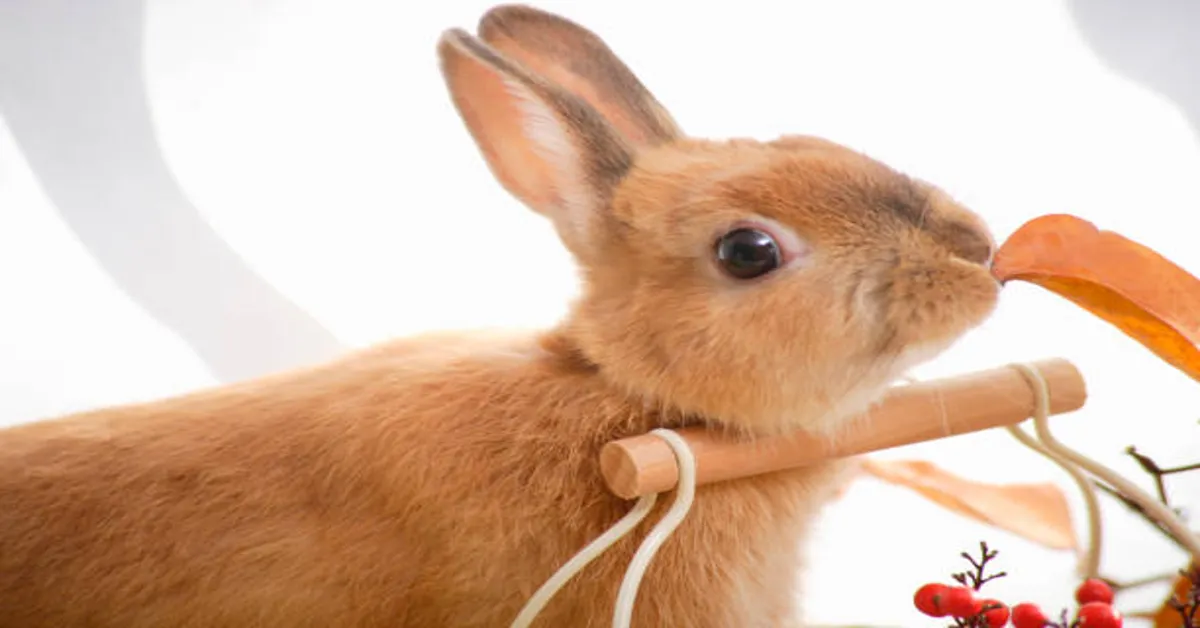In the diverse world of human relationships, intimacy, and alternative lifestyles, the term “rope bunny” holds a unique place. This concept originates from the practice of rope bondage, where two or more participants engage in artistic, sensual, or recreational tying of the body using ropes. While the ropes themselves serve as the medium, the role of the rope bunny is far more than being a passive participant. Instead, it is a dynamic, expressive, and deeply personal experience that blends trust, vulnerability, and beauty.
To understand the rope bunny fully, one must explore not only the definition but also the cultural context, psychology, safety measures, roles, benefits, challenges, and variations in how this practice is approached. This article will cover every aspect in detail, offering readers clarity and comprehensive insight.
What is a Rope Bunny?
A rope bunny is the person who is tied or restrained in rope bondage, typically by a partner known as a rigger (the person who does the tying). The term “bunny” is symbolic, evoking a sense of playfulness, curiosity, and softness. It emphasizes the receiver’s role in the interaction.
However, being a rope bunny does not mean passivity or lack of agency. Instead, rope bunnies actively engage by giving feedback, communicating limits, embracing sensations, and co-creating the experience with their partner. For some, it is an art form, for others a meditative state, and for many it is a combination of both.
Historical and Cultural Context
Rope bondage has deep historical roots, particularly in Japanese Shibari and Kinbaku, where rope was used as both a method of restraint and an artistic performance. Over time, this practice has spread globally and adapted into different cultures and lifestyles.
In modern Western contexts, rope bunnies are celebrated for their contribution to the aesthetics of rope play. They are often photographed, sketched, or admired in live performances. Far from being seen only as “subjects,” rope bunnies help define the quality of the rope scene by expressing emotions, reactions, and personal artistry.
The Psychology of a Rope Bunny
1. Trust and Vulnerability
Rope bunnies willingly allow themselves to be restrained, creating a heightened state of vulnerability. This act fosters deep trust in their partner, who must be attentive, skilled, and caring.
2. Sensory Awareness
The ropes create pressure, warmth, and unique sensations that many rope bunnies find calming, arousing, or emotionally powerful. The awareness of one’s own body increases as ropes highlight muscle groups and posture.
3. Emotional Release
Many rope bunnies experience what is called subspace, a trance-like mental state that results from surrendering control, much like a meditative flow.
4. Self-Expression
Through ropes, a bunny may express elegance, resilience, eroticism, or even surrender. It is both a personal journey and a performance of identity.
Roles and Responsibilities of a Rope Bunny
Although it may appear that the rigger does all the work, the rope bunny plays a vital role.
| Aspect | Rope Bunny’s Role |
|---|---|
| Communication | Clearly expresses boundaries, pain levels, and preferences. |
| Consent | Provides informed, enthusiastic consent before every session. |
| Physical Feedback | Adjusts posture, breath, and verbal feedback to assist the rigger. |
| Mental Presence | Engages emotionally and mentally, remaining present in the scene. |
| Aftercare | Requests and receives emotional or physical care after the scene. |
A rope bunny is not just “being tied.” They are actively co-creating the rope experience.
Types of Rope Bunnies
Different individuals approach the role of rope bunny in unique ways.
- Sensual Rope Bunny – Focused on erotic pleasure and intimacy.
- Artistic Rope Bunny – Enjoys being part of visually appealing rope designs and photography.
- Spiritual/Emotional Rope Bunny – Seeks meditative, emotional, or therapeutic release.
- Performance Rope Bunny – Takes part in public rope demonstrations or stage shows.
- Experimental Rope Bunny – Interested in testing boundaries, body positions, and styles of tying.
Safety Considerations for Rope Bunnies
Safety is the cornerstone of rope bondage. Without it, the risks can outweigh the pleasures.
Key Safety Guidelines
| Safety Measure | Description |
|---|---|
| Communication | Establish safe words, signals, and limits before beginning. |
| Rope Quality | Use ropes made from natural fibers (like hemp or jute) or high-quality synthetics designed for bondage. |
| Nerve Safety | Avoid placing ropes on sensitive nerve clusters such as wrists and neck without knowledge. |
| Circulation Checks | Regularly check color, temperature, and sensation of tied limbs. |
| Emergency Tools | Keep safety scissors nearby for immediate rope removal. |
| Aftercare | Provide emotional reassurance, hydration, and body care post-session. |
A rope bunny should never ignore tingling, numbness, or extreme discomfort. Communication must always stay open.
Physical Benefits of Being a Rope Bunny
While rope play is not a substitute for physical therapy, many bunnies report certain benefits:
- Improved Body Awareness – Ropes highlight posture, breath, and balance.
- Stress Relief – The act of surrender allows emotional release and relaxation.
- Enhanced Flexibility – Certain ties encourage stretching of muscles.
- Mindfulness Practice – Similar to yoga or meditation, rope play demands present awareness.
- Connection and Intimacy – Deepened emotional and physical bond with one’s partner.
Challenges Faced by Rope Bunnies
- Physical Strain – Some ties can be demanding on joints and muscles.
- Emotional Vulnerability – The intensity of subspace can sometimes lead to emotional drops afterward.
- Risk of Injury – Without proper safety, rope can cause nerve or circulation damage.
- Stigma and Misunderstanding – Many people outside the lifestyle misunderstand or judge rope play.
- Finding Skilled Partners – Safe and experienced riggers are essential, but not always easy to find.
Aftercare for Rope Bunnies
Aftercare refers to the recovery period following a rope session. A bunny may feel physically sore or emotionally sensitive. Good aftercare involves:
- Physical Support – Massages, warm blankets, hydration, and rest.
- Emotional Reassurance – Words of affirmation, cuddling, or calm presence.
- Checking for Rope Marks – Monitoring skin for bruises or abrasions.
- Reflection – Discussing what worked well and what can be improved.
Rope Bunny vs. Other Roles
To better understand the rope bunny, it helps to compare with related roles in rope play.
| Role | Definition | Focus |
|---|---|---|
| Rope Bunny | Person being tied | Sensations, aesthetics, vulnerability |
| Rigger | Person tying ropes | Technique, safety, artistic design |
| Switch | Someone who enjoys both roles | Flexibility and variety |
| Model | Bunny in a performance or photoshoot | Artistic display |
Rope Bunny in Relationships
Being a rope bunny can impact relationships in profound ways:
- Romantic Relationships – Deepens trust and intimacy.
- Casual Play Partnerships – Encourages exploration without long-term commitments.
- Community Connection – Rope bunnies often join local rope groups, classes, and events.
- Personal Growth – Builds self-confidence and self-awareness.
Myths and Misconceptions
- “Rope bunnies are passive or weak.”
– In reality, they require strength, resilience, and active participation. - “It’s only about sex.”
– While rope can be erotic, many practice it for art, meditation, or personal growth. - “Rope bunnies have no control.”
– They hold significant power through consent and communication.
Tips for Aspiring Rope Bunnies
- Start slow and simple—basic ties are best for beginners.
- Communicate openly and honestly with your rigger.
- Educate yourself about rope safety.
- Join workshops or rope communities for learning.
- Listen to your body and respect your boundaries.
Conclusion
A rope bunny is far more than someone who simply gets tied up. It is a role filled with nuance, personal depth, emotional exploration, and artistic expression. The ropes are only the medium; the true essence lies in the connection, trust, and experience shared between bunny and rigger. By understanding safety, communication, and the psychology of the role, rope bunnies can find joy, empowerment, and fulfillment in their journey.
ALSO READ: Rosboxar: A Complete Informative Guide
FAQs
1. What does the term rope bunny mean?
A rope bunny is the person being tied in rope bondage, often enjoying the sensations, art, or emotional experience.
2. Is being a rope bunny safe?
Yes, when practiced with proper safety measures such as communication, circulation checks, and emergency tools, it can be safe.
3. Do rope bunnies need experience?
Not necessarily. Beginners can start with basic ties and learn gradually, provided they have a knowledgeable partner.
4. Can rope bunnies say no during a session?
Absolutely. Consent is ongoing, and rope bunnies can stop or adjust the scene at any time.
5. Is rope bunny only about intimacy?
No. While it can be sensual, many rope bunnies participate for art, meditation, performance, or self-expression.









